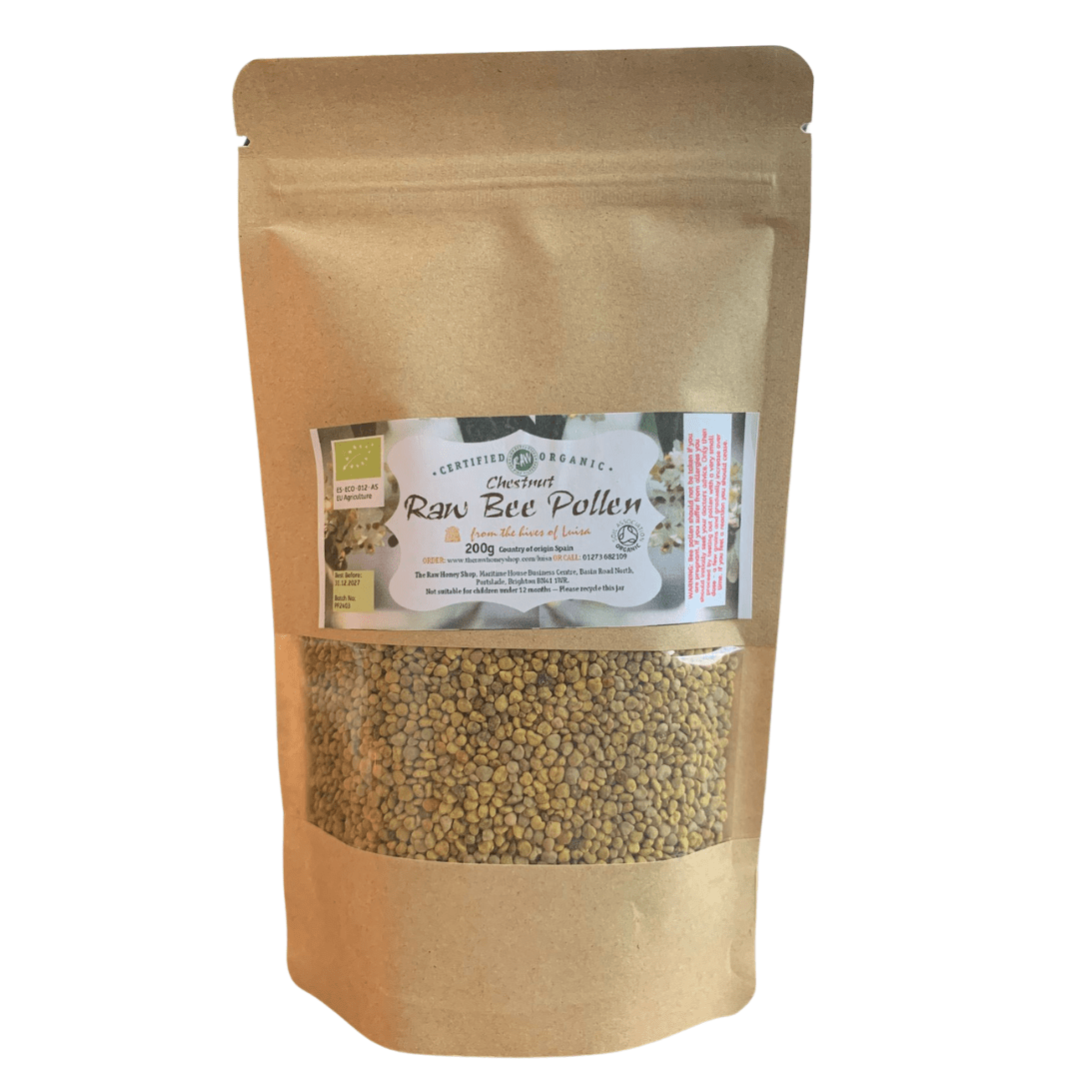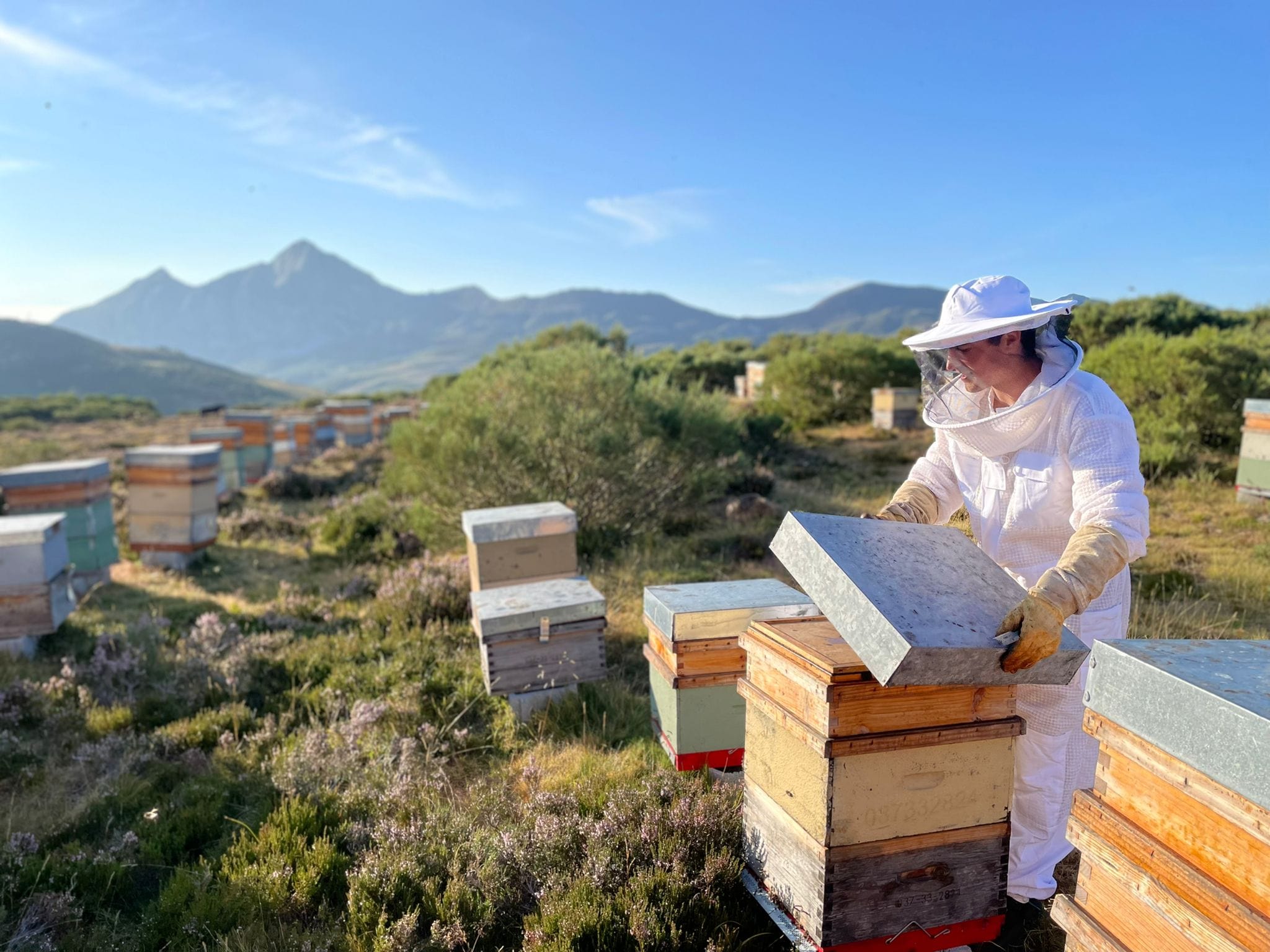Dried Raw Organic Chestnut Bee Pollen - 200g
- Regular price
- GBP 23.99
- Sale price
- GBP 23.99
- Regular price
-
GBP
Dried Raw Organic Chestnut Bee Pollen - 200g
Raw, natural and one of the purest pollens because of the remote area it comes from.
Luisa's Dried Raw Organic Chestnut Pollen comes from the Cantabrian Mountains and hills in Asturias, a green and unspoilt area in the north of Spain. Bee pollen contains a wide variety of long-chain fatty acids, vitamins, minerals and trace elements as well as enzymes from the bees themselves.
On the flavour: This pollen has a slight bitterness to it along with a beautiful floral flavour with deep, earthy notes.
What about the tree the honey comes from? This pollen comes from the Chestnut tree.
Colour: This pollen is a beautiful dark yellow and orange with occasional purple and dark blue grains.
Who produces this pollen? Well obviously the bees but the hives are managed by Luisa and her daughter Olaya. She is a beekeeper with a passion for producing raw honey and bee products, like pollen, of the very highest quality - with a lot attention to detail.
Common uses: Pollen has been used throughout the ages as a source of food and nourishment. It can be used as a topping for yoghurt or cereal, blended into smoothies, mixed into salad dressings and many other uses so long as it is not heated, which would damage some of the nutrients.
Pollen facts: Long ago, the Greeks and Romans called natural bee pollen "the life-giving dust" or the secret "ambrosia", which was eaten to acquire eternal youth. Pollen was entombed with pharaohs, used by the American Indians, and for centuries by tribes in China.
Bees have pollen sacks, which they collect the pollen in to take back to the hive. The brood needs a lot of protein to aid its growth, and so for short periods of time the beekeepers harvest the pollen by placing small brushes at the entrance of the hive. This brushes off the pollen grains, which are collected, and the bees are then left to collect without further interference.
Important - allergies:
If you are affected by hay fever, then bee pollen can cause an allergic reaction. If you are in any doubt it is advisable to take just a few grains initially and then wait to see if you get a reaction. If you don't, gradually increase the dosage until you are sure it is not negatively affecting you.


















